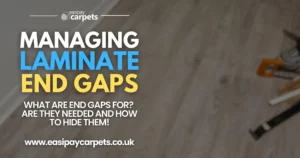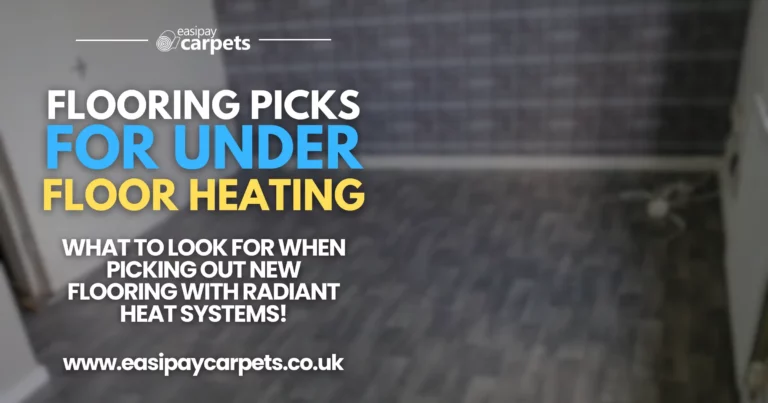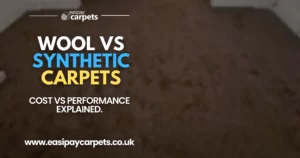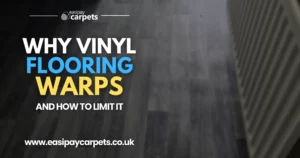

Which Flooring Is Best For Underfloor Heating?
Underfloor heating systems are a sophisticated and efficient way to warm your home. Unlike traditional radiators that heat rooms unevenly from one location, underfloor heating provides even warmth across the entire floor surface. This not only enhances comfort but can also be more energy-efficient. However, the type of flooring you install over underfloor heating can significantly affect both the system’s performance and efficiency. Here’s how underfloor heating works and what to consider when selecting the best flooring options.
How Underfloor Heating Works
Underfloor heating systems work by circulating warm water through pipes or by running electric coils under the flooring. This heats the floor surface, which then radiates warmth evenly throughout the room from the ground up. The efficiency of this heating method largely depends on the thermal conductivity of the flooring material—how readily it allows heat to pass through it.
Since the flooring acts as the medium through which the heat is transferred into the room, choosing the right material is crucial. The ideal flooring materials should have good thermal conductivity, allowing the heat to radiate quickly and efficiently into the room without trapping it underneath, which could lead to energy inefficiency and overheating of the heating system.
Overview of Flooring Types
Carpets
Carpets are favoured in homes for their warmth and comfort underfoot, sound dampening qualities, and wide range of styles and textures. They consist of an upper layer of pile attached to a backing. The pile is usually made from wool, polyester, nylon, or polypropylene, and can be either cut, looped, or a combination of both.
Pros:
- Adds additional insulation, helping to retain heat in the room.
- Soft and comfortable underfoot, enhancing the warmth provided by the heating system.
Cons:
- High thermal resistance, especially if thick or with a high tog underlay, which can restrict the flow of heat into the room.
- Can lead to higher energy usage as the underfloor heating system needs to run at a higher temperature to compensate for the insulation effect of the carpet.
Sheet Vinyl
Sheet vinyl flooring is a popular choice due to its water resistance, affordability, and the ability to replicate other flooring styles such as hardwood and tile. Sheet vinyl flooring is made from a single layer of synthetic polymer materials and comes in large, continuous sheets that offer a seamless installation.
Pros:
- Excellent thermal conductivity, allowing underfloor heating to quickly pass heat through to the surface.
- Water-resistant and even water proof when sealed around edges.
- Easy to maintain, making it suitable for areas like kitchens and bathrooms where moisture is prevalent.
Cons:
- Requires precise temperature control to prevent the material from warping or deforming under excessive heat.
Laminate Flooring
Laminate is chosen for great durability, its ability to mimic the appearance of wood or stone flooring at a more affordable price point and because there’s typically less maintenance. Laminate flooring is composed of a wear layer, a decorative layer, and a core layer (usually made of HDF), topped with a backing layer for stability.
Pros:
- Can be suitable for underfloor heating if the correct underlayment is used to facilitate heat transfer.
- Resistant to many types of wear and easy to clean.
Cons:
- Not all laminate flooring is designed for use with underfloor heating; always check manufacturer’s specifications.
- Somewhat resistant to heat transfer compared to other flooring types, requiring careful consideration of underlay materials.
Luxury Vinyl Tile (LVT)
LVT is increasingly popular for its durability, range of designs, and ease of maintenance. It stands for Luxury Vinyl Tile and comes as either tiles you stick down, or planks you can slot together like laminate. Because there’s no wood involved, LVT is a great waterproof alternative to laminate flooring. LVT consists of multiple layers including a heavy-duty wear layer, a design layer, a core layer, and a backing. It is designed to offer high durability and an attractive appearance.
Pros:
- Excellent thermal conductivity and suitable for use with underfloor heating.
- Durable, water-resistant (tile) or water-proof (plank), and capable of handling temperature fluctuations without warping.
Cons:
- Higher cost compared to standard vinyl due to its advanced construction and benefits.
Stone Plastic Composite (SPC) Flooring
Known for its strength and dimensional stability, SPC is favoured in both residential and commercial applications and typically comes in a similar form to laminate flooring where it’s assembled with tongue and groove joints. SPC usually replicates either stone or wood and like LVP, is fully waterproof and more resistant than laminate flooring, but at a higher cost. SPC flooring features a core typically made from a mixture of limestone, polyvinyl chloride, and stabilizers, making it extremely sturdy.
Popularity: Pros:
- Superior thermal conductivity, making it highly effective with underfloor heating systems.
- Extremely durable and stable, even under temperature extremes.
Cons:
- Can be more expensive than other vinyl products due to its advanced material properties.
- The rigid nature of the flooring might feel harder underfoot compared to other softer options.
Conclusion
When installing underfloor heating, choosing the right flooring is essential not just for the efficiency of the heating system but also for the comfort and durability of the floor. Materials like LVT and SPC offer the best performance due to their excellent heat conduction properties and overall durability. While carpets might provide a cosy feel, they can significantly hinder the effectiveness of underfloor heating systems due to their insulative nature. By understanding how different materials interact with underfloor heating, homeowners can make informed decisions that balance aesthetics, function, and energy efficiency.
In Conclusion
Each flooring option has its unique advantages and drawbacks. The choice ultimately depends on the specific needs and preferences of the low-income, busy household. Consider factors such as budget constraints, the desired level of comfort, ease of maintenance, and compatibility with underfloor heating. By carefully weighing the pros and cons of each option, you can make an informed decision to create a warm and inviting living space for your family without stretching your budget.
If you’re looking for new flooring we’d be delighted to help – Easipay Carpets can help you split the cost of your new flooring be it laminate, vinyl or carpet, from as little as £10 per week! There’s no interest or credit checks and we’ll give you free underlay if you need it too! To find out more and request our samples, fill in the form below!
Last Updated: 23/04/2024
About The Author
Matt
Pay Weekly Flooring From £10 Per Week!
• 0% Interest!
• No Credit Checks!
• Small Weekly Payments!
• Free Underlay!
• Free Door Trims!
• Free Carpet Grippers




